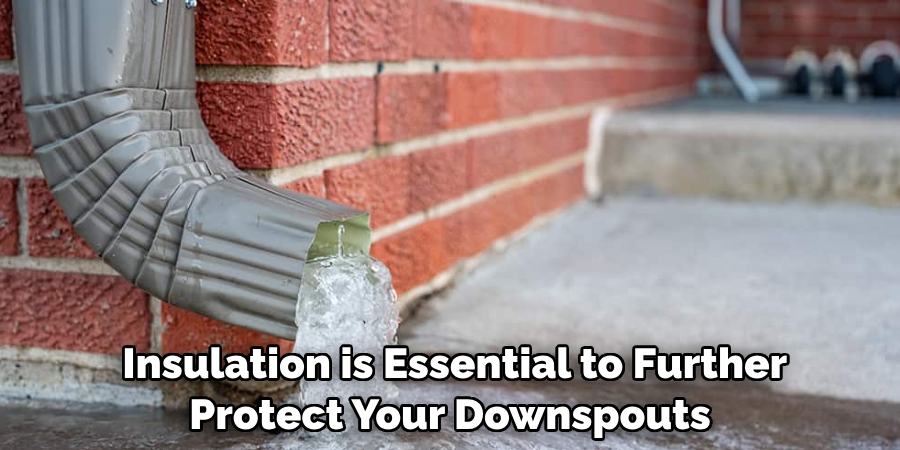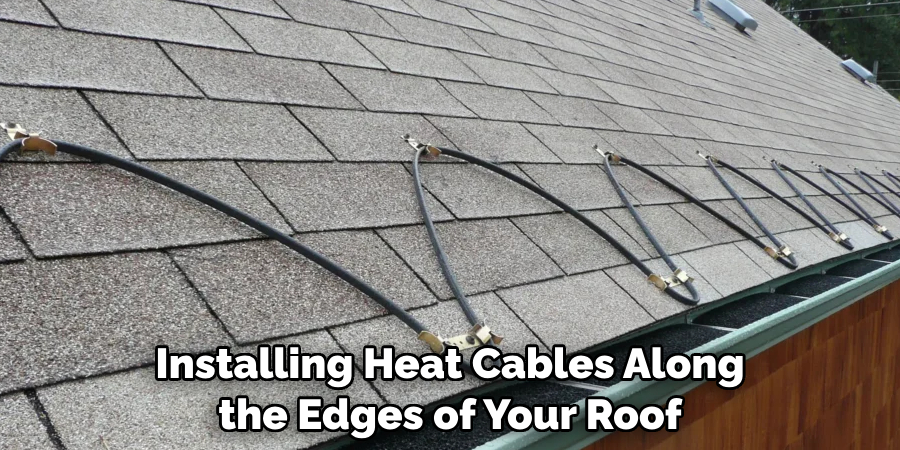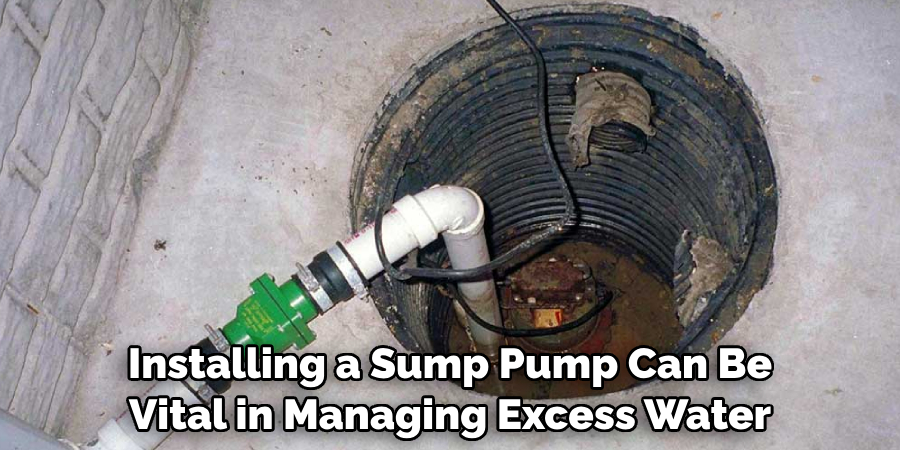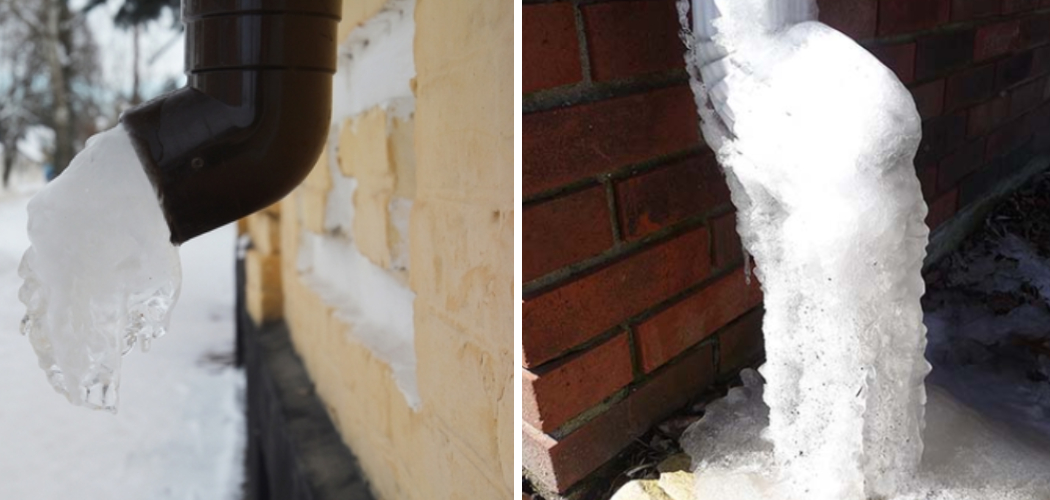Are you worried about freezing temperatures damaging your home’s downspouts? Don’t worry—there are some simple steps you can take to prevent them from freezing and causing potential damage.

As winter approaches, homeowners face the challenge of preventing downspouts from freezing. A frozen downspout can lead to severe issues, including water backup, ice dams, and potential damage to the roof and foundation. Understanding the causes of freezing and implementing effective strategies to insulate and maintain clear pathways for water flow is essential.
In this guide, we will explore practical tips and techniques on how to keep downspouts from freezing, protecting your home from the adverse effects of frozen drainage systems.
What are the Causes of Downspout Freezing?
Before diving into prevention methods, it’s important to understand the factors contributing to downspout freezing. Some of the common causes include:
- Cold Temperatures: When the temperature drops below freezing, water in your gutters and downspouts can freeze and block the flow of water.
- Poor Insulation: Lack of proper insulation around your gutters and downspouts makes them more susceptible to cold temperatures, increasing the chances of freezing.
- Clogged Gutters: If your gutters are clogged with debris such as leaves and twigs, water cannot drain properly, leading to standing water that can freeze in low temperatures.
These factors can work alone or together to cause your downspouts to freeze, so it’s important to address each one to prevent freezing effectively.
What Will You Need?
To keep your downspouts from freezing, you will need:
- Insulation: Insulating materials such as foam or heat tape can help prevent cold temperatures from reaching your gutters and downspouts.
- Gutter Guards: Installing gutter guards can prevent debris from clogging your gutters, allowing water to flow freely.
- A Ladder: To reach and inspect your gutters and downspouts, a sturdy ladder is necessary.
Once you have these materials ready, let’s dive into the steps to prevent downspouts from freezing.
10 Easy Steps on How to Keep Downspouts From Freezing
Step 1: Inspect and Clean Your Gutters
Begin by inspecting your gutters for any debris, such as leaves, twigs, or dirt, that may have accumulated over time. Use a sturdy ladder to safely access your gutters and remove all obstructions to ensure water can flow freely.
Cleaning your gutters will prevent water pooling inside, which can freeze when temperatures drop. It’s essential to do this regularly, especially when leaves constantly fall.

Step 2: Install Gutter Guards
Gutter guards are a highly effective solution for preventing debris accumulation in your gutters, which can lead to freezing issues. By acting as a protective barrier, these guards help keep leaves, twigs, and other debris from entering your gutters while allowing water to flow freely.
Various types of gutter guards are available, including mesh screens, foam inserts, and reverse curve systems, each with advantages. When selecting gutter guards, consider the local climate, the types of trees around your property, and your gutter system’s specific needs. Proper installation is crucial; ensure the guards securely fit over your gutters to maximize their effectiveness.
With gutter guards in place, you significantly reduce the risk of clogs, thereby maintaining clear pathways for water, even during the harshest winter conditions. This proactive measure not only lowers the chance of freezing but also minimizes the frequency of gutter maintenance, allowing you to enjoy peace of mind throughout the winter months.
Step 3: Insulate Your Downspouts
Adding insulation is essential to further protect your downspouts from freezing temperatures. Use foam insulation sleeves or heat tape designed for outdoor use. Wrap these materials around the downspouts, ensuring they are snug and secure.
Insulating your downspouts helps retain heat and prevents cold air from causing the water inside to freeze. Focus on areas most exposed to the elements, such as the upper sections of the downspouts, where they are more vulnerable to frigid temperatures. Regularly check the integrity of the insulation to ensure it remains effective throughout the winter season.

Step 4: Ensure Proper Drainage
Ensuring proper drainage is crucial to preventing downspouts from freezing. Check that your downspouts direct water away from your home’s foundation and that the ground slopes away from the house. If the drainage system is ineffective and water pools near your foundation, it can lead to freezing issues. Adjust the position of downspout extensions or consider installing additional drainage solutions, such as a French drain or dry well, to promote effective water movement.
Regularly inspect the area around your downspouts during winter and remove any obstructions or debris hindering proper drainage. This proactive approach will help safeguard against water backup and the potential for freezing.
Step 5: Heat Cables Installation
Consider installing heat cables along the edges of your roof and inside your gutters and downspouts. These cables generate gentle heat to prevent ice from forming and ensure that any water flows freely through the system. When installing, follow manufacturer instructions for placement and securing.
It’s essential to have the cables plugged in when freezing temperatures are expected and inspect them regularly to ensure they function correctly. This additional layer of protection will significantly reduce the chances of ice buildup and maintain clear drainage pathways all winter.

Step 6: Monitor Temperature Changes
Regularly monitor the weather forecast during winter to anticipate significant temperature drops that could lead to freezing conditions. By staying informed, you can take proactive measures, such as activating heat cables or conducting inspections of your gutters and downspouts before the temperatures plummet.
If you notice a forecast of sustained freezing temperatures, increase your vigilance; check for any signs of ice formation or blockage in your drainage system. Keeping an eye on the weather can help you respond quickly and effectively to any potential issues before they escalate, reducing the risk of freeze-related problems.
Step 7: Clear Snow and Ice from Roofs
After heavy snowfalls, it’s important to regularly clear snow and ice from your roof. Accumulated snow can lead to ice dams that block water flow through your gutters, resulting in potential freeze issues for your downspouts. Use a roof rake to gently pull the snow off the roof, particularly near the edges where ice dams are most likely to form. Ensure you take safety precautions while working on your roof, such as using a sturdy ladder and considering safety harnesses if necessary. By maintaining a transparent roof, you minimize the risk of ice buildup and keep water flowing freely into your downspouts.
Step 8: Install a Sump Pump
Installing a sump pump can be vital in managing excess water around your home during winter. A sump pump automatically removes accumulated water from areas prone to flooding, such as basements or crawl spaces, reducing the likelihood of overflow near your downspouts.
When water is efficiently pumped away from your foundation, it decreases the chances of ice forming in your downspouts. Ensure that the sump pump is installed correctly and regularly maintained for optimal performance.
This preventative measure helps with water management in winter and protects against mold growth and structural damage throughout the year.

Step 9: Schedule Regular Maintenance
A regular maintenance schedule is critical to ensuring your gutter system functions efficiently throughout the winter. Set specific times—ideally at the beginning of the season and mid-season—to inspect and clean your gutters and downspouts. During these inspections, check for any signs of damage or wear on your gutter guards, insulation, and heat cables. Additionally, clear any blockages and ensure that all components are functioning correctly.
Keeping a written log of these maintenance activities can help you track issues over time and ensure no preventative action is overlooked. By committing to regular upkeep, you not only prolong the lifespan of your gutter system but also provide your home with essential protection against winter-related water damage.
Step 10: Invest in Quality Materials
To ensure the longevity and reliability of your gutter system, it’s essential to invest in high-quality materials. Consider options like seamless gutters, which reduce the risk of leaks and clogs due to fewer joints. Additionally, opt for durable gutter guards and downspouts made from corrosion-resistant materials, which will withstand the elements over time. While quality materials may require a higher initial investment, they can save you money in the long run by minimizing the need for frequent repairs or replacements. Prioritizing durability will contribute to the overall effectiveness of your winter water management strategy.
By following these steps and continually monitoring and maintaining your gutter system, you can ensure it remains effective throughout winter.
Conclusion
In summary, how to keep downspouts from freezing requires a proactive and comprehensive approach to winter water management.
You can significantly reduce the risk of ice buildup by ensuring proper drainage away from your home’s foundation, installing heat cables, monitoring temperature changes, and clearing snow from your roof. Implementing a sump pump and adhering to a regular maintenance schedule is crucial for managing excess water effectively. Finally, investing in quality materials for your gutter system will provide durability and reliability for years.
By following these strategies, you can protect your home from the damaging effects of frozen downspouts and maintain a functional drainage system throughout the winter months.

